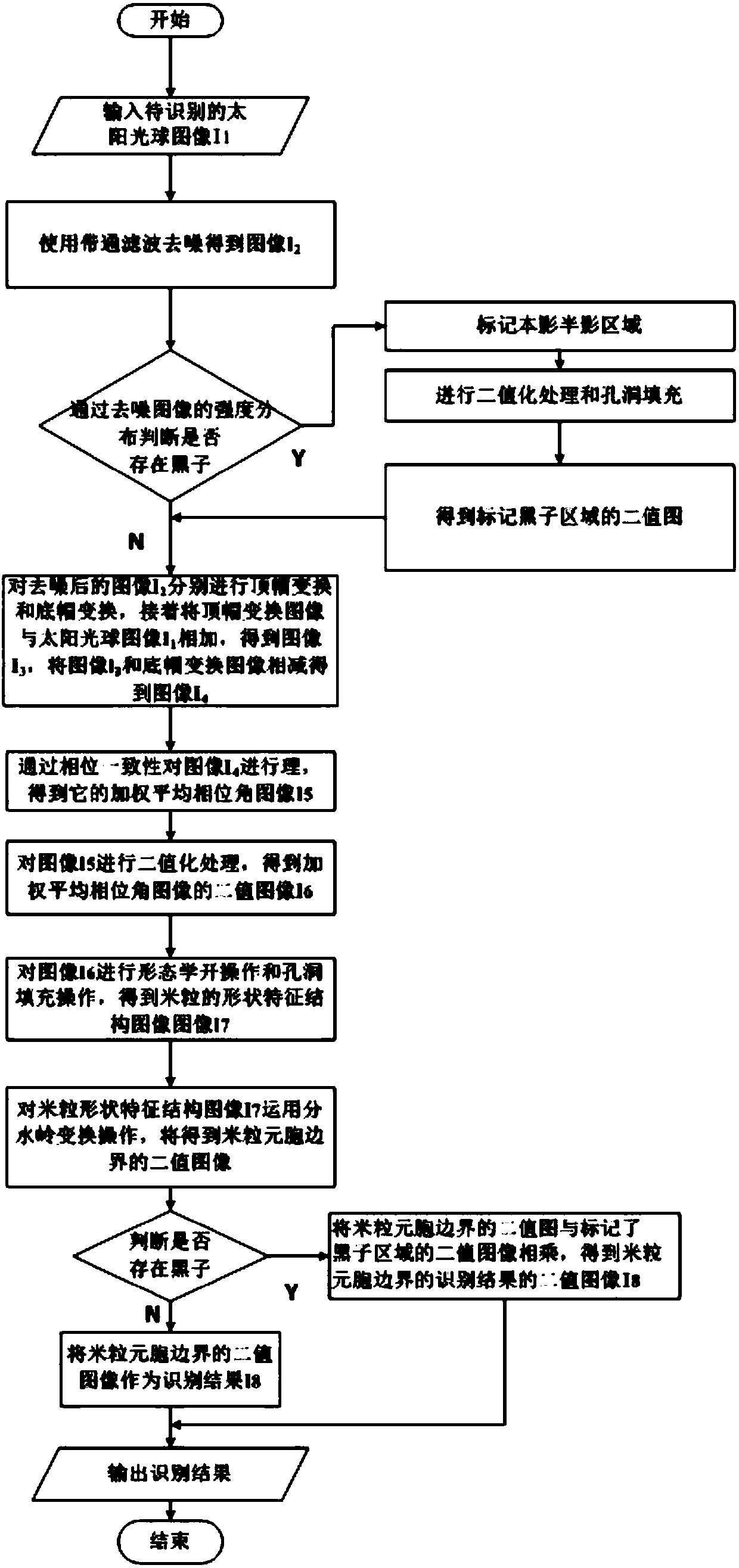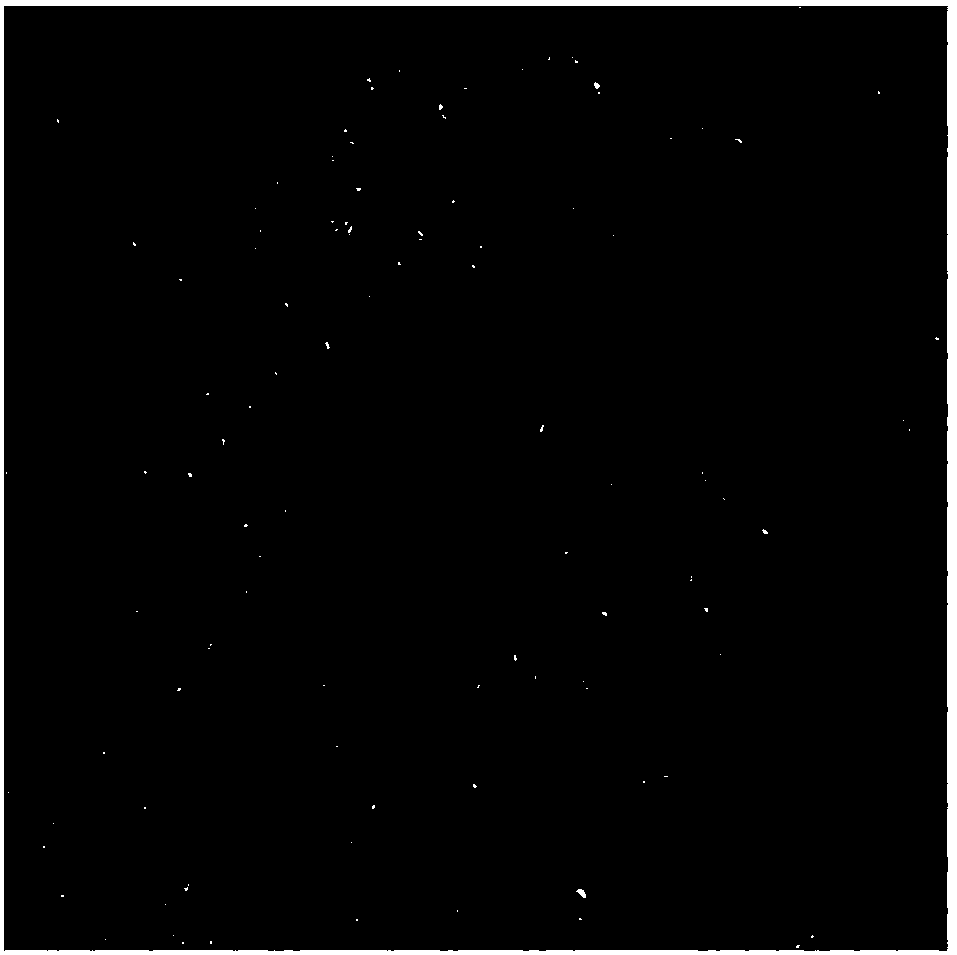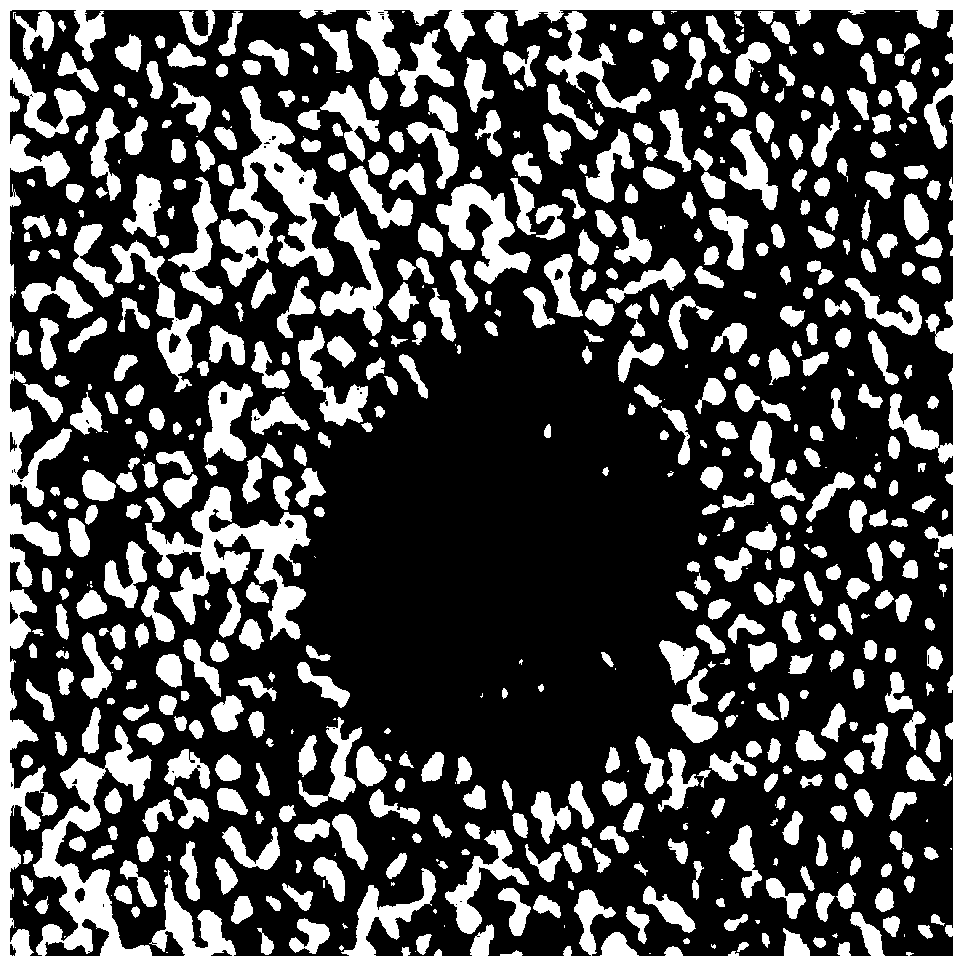A method for identifying solar rice grains in astronomical images
An astronomical image and image technology, applied in the field of astronomical technology and image processing, can solve problems such as inaccurate segmentation results, over-segmentation or wrong segmentation, and achieve good robustness, reliable and accurate recognition results
- Summary
- Abstract
- Description
- Claims
- Application Information
AI Technical Summary
Problems solved by technology
Method used
Image
Examples
Embodiment 1
[0038] Embodiment 1: as Figure 1-21 As shown, a method for identifying solar rice grains in astronomical images first receives the solar photosphere image I to be identified 1 , use bandpass filter to denoise, and get the denoised image I 2 ; Then according to the denoised image I 2 Judging whether there are sunspots in the image by the intensity distribution of the image; then the denoised image I 2 Perform top-hat transformation and bottom-hat transformation respectively to obtain the top-hat transformation image and bottom-hat transformation image; then add the top-hat transformation image and the solar photosphere image to obtain the image I 3 , the image I 3 Subtract from the bottom hat transformed image to get image I 4 ; for image I 4 Through the phase consistency method, binarization, morphological opening operation and hole filling operation in sequence, the characteristic structure image of rice grain shape I is obtained 7 ; For rice grain shape feature struct...
Embodiment 2
[0048] Embodiment 2: as Figure 1-21 As shown, a method for identifying solar rice grains in astronomical images first receives the solar photosphere image I to be identified 1 , use bandpass filter to denoise, and get the denoised image I 2 ; Then according to the denoised image I 2 Judging whether there are sunspots in the image by the intensity distribution of the image; then the denoised image I 2 Perform top-hat transformation and bottom-hat transformation respectively to obtain the top-hat transformation image and bottom-hat transformation image; then add the top-hat transformation image and the solar photosphere image to obtain the image I 3 , the image I 3 Subtract from the bottom hat transformed image to get image I 4 ; for image I 4 Through the phase consistency method, binarization, morphological opening operation and hole filling operation in sequence, the characteristic structure image of rice grain shape I is obtained 7 ; For rice grain shape feature struct...
Embodiment 3
[0049] Embodiment 3: as Figure 1-12 As shown, a method for identifying solar rice grains in astronomical images first receives the solar photosphere image I to be identified 1 , use bandpass filter to denoise, and get the denoised image I 2 ; Then according to the denoised image I 2 Judging whether there are sunspots in the image by the intensity distribution of the image; then the denoised image I 2 Perform top-hat transformation and bottom-hat transformation respectively to obtain the top-hat transformation image and bottom-hat transformation image; then add the top-hat transformation image and the solar photosphere image to obtain the image I 3 , the image I 3 Subtract from the bottom hat transformed image to get image I 4 ; for image I 4 Through the phase consistency method, binarization, morphological opening operation and hole filling operation in sequence, the characteristic structure image of rice grain shape I is obtained 7 ; For rice grain shape feature struct...
PUM
 Login to View More
Login to View More Abstract
Description
Claims
Application Information
 Login to View More
Login to View More - R&D
- Intellectual Property
- Life Sciences
- Materials
- Tech Scout
- Unparalleled Data Quality
- Higher Quality Content
- 60% Fewer Hallucinations
Browse by: Latest US Patents, China's latest patents, Technical Efficacy Thesaurus, Application Domain, Technology Topic, Popular Technical Reports.
© 2025 PatSnap. All rights reserved.Legal|Privacy policy|Modern Slavery Act Transparency Statement|Sitemap|About US| Contact US: help@patsnap.com



